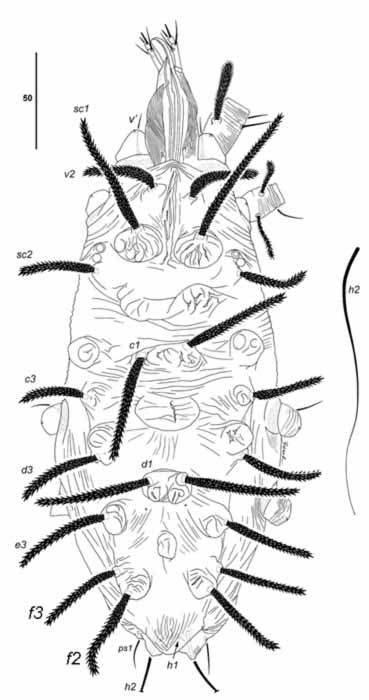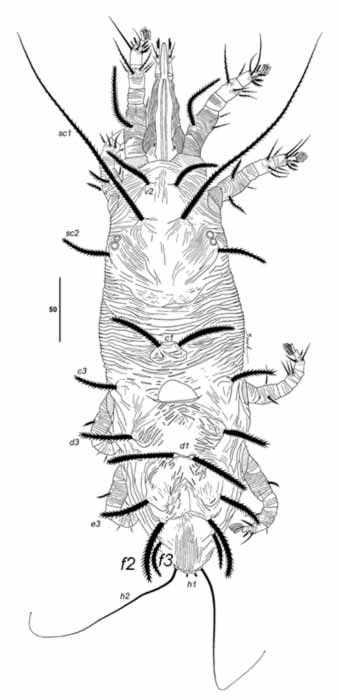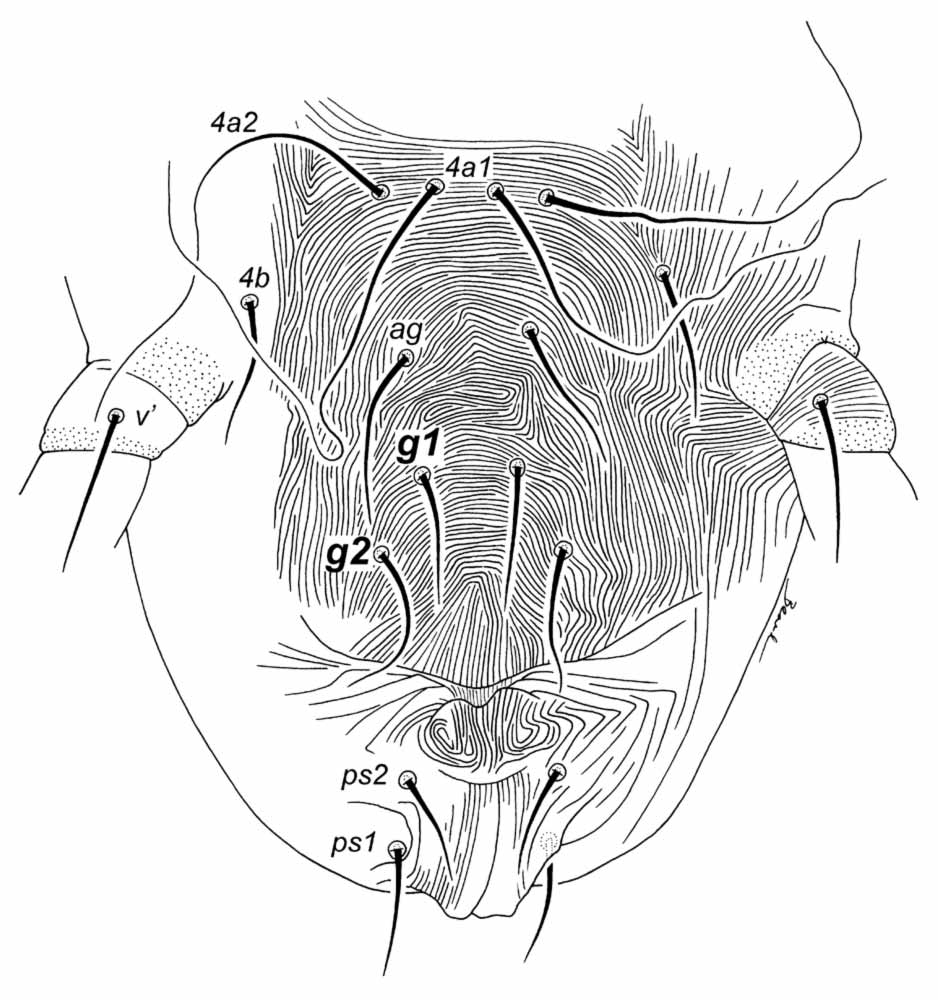Gahniacarus
|
Fig. 1. Gahniacarus tuberculatus female dorsum. |
|
Fig. 2. Gahniacarus gersonus female dorsum. |
|
Fig. 3a. Gahniacarus gersonus female; 3b. G. tuberculatus female. |
|
Fig. 4. Gahniacarus tuberculatus female posterior venter. |
Key characters
- c2, d2, e1, e2 absent (Fig. 1)
- f2 present
- inserted either posterior to f3 (G. tuberculatus - Fig. 1) or anterior to f3 (G. gersonus - Fig. 2)
- h2 elongate, tapered (Figs. 1, 2, 3)
- sc1 similar to other dorsal setae (Figs. 1, 3b) or elongate and tapered (Figs. 2, 3a)
- genital setae g1 inserted anterior to g2 (Fig. 4)
- anterior margin of prodorsum smoothly rounded, projections absent
- ventral, genital and anal plates not developed, membranous (Fig. 4)
- 2 pairs ps setae (Fig. 4)
- 3 segmented palp
- ventral cuticle finely striate
Similar taxa
Acaricis - c1 absent; e1 present; anterior margin of prodorsum with forked projection; palp 4-segmented
Cyperacarus - f3 absent; c1, d1 minute, obviously shorter than other dorsal setae; 3 projections on anterior margin prodorsum
Prolixus - body elongate; c1 absent; e1 present; f2 present or absent
Number of species
Two - G. tuberculatus, G. gersonus
Authority
Beard and Ochoa
Distribution
Australia
Hosts
Gahnia spp. (Cyperaceae)
Colour
yellow, with small black spots visible internally
Remarks
Individuals wedge themselves into grooves on underside of host leaf blades.
Eggs laid in grooves also.




